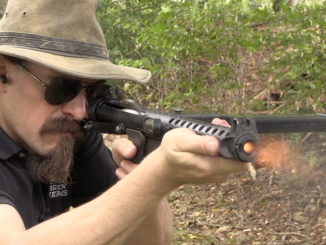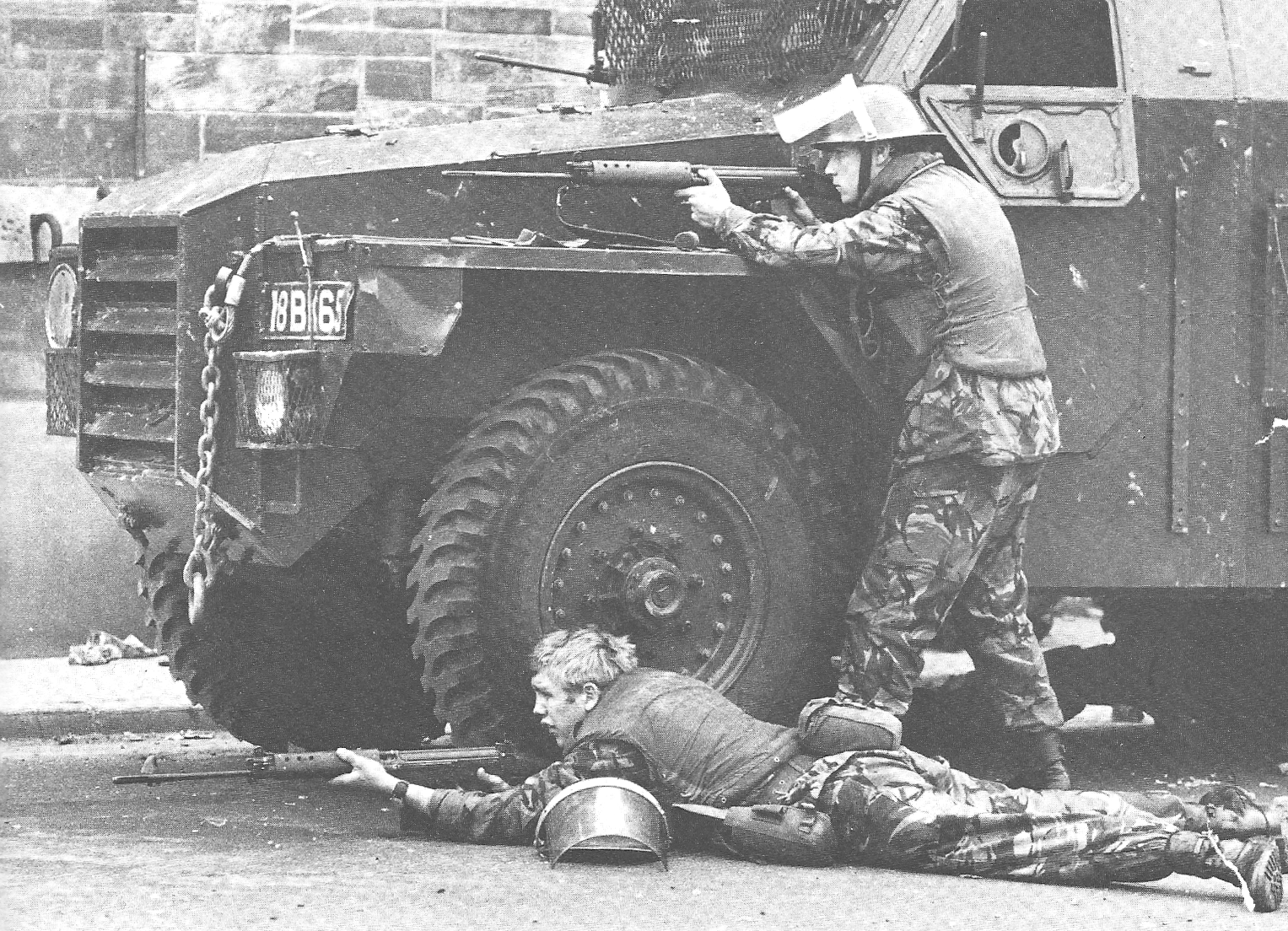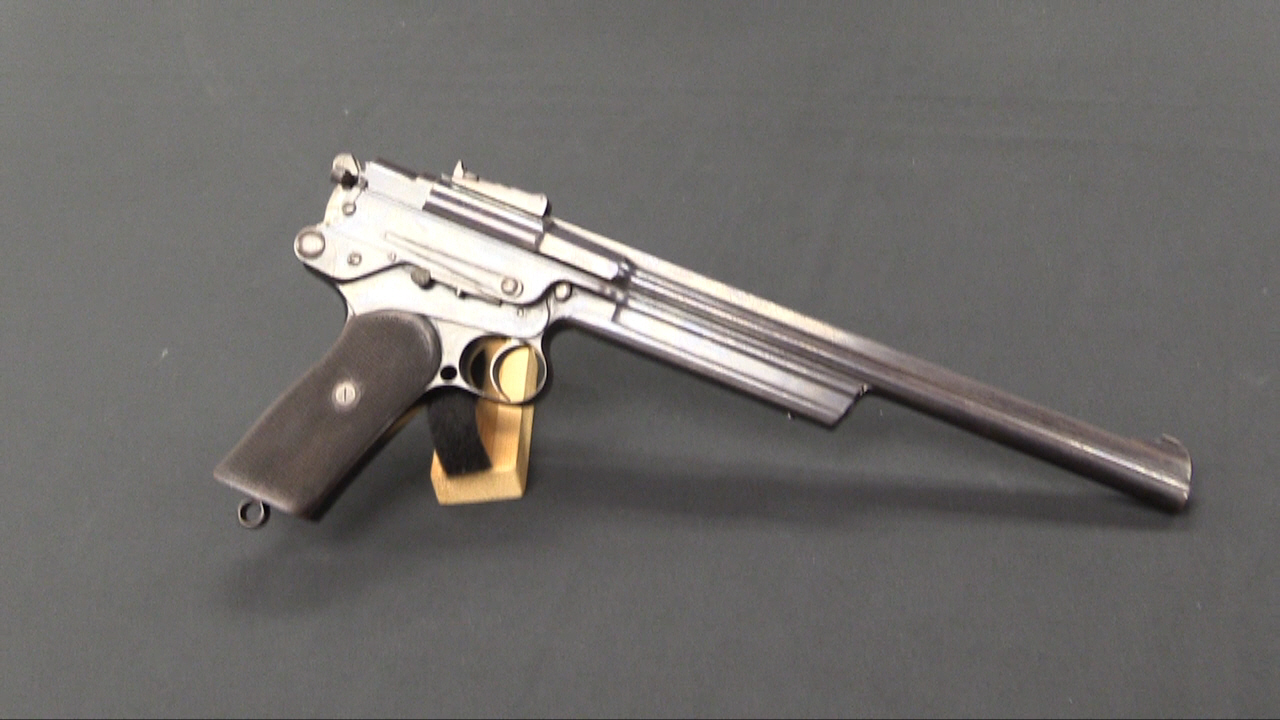The British Sterling firm designed the SAR-80 (specifically, their engineer Frank Waters) as a very simple rifle to sell to countries outside the main NATO/Warsaw spheres of influence. Sterling ended up getting a license to produce the AR-18 though, and didn’t put Water’s design into production.
When the newly formed Chartered Industries of Singapore came looking for a rifle to produce, the SAR-80 design was a chance for Sterling to sell a production license. CIS needed something to produce domestically to equip the Singaporean Army, and the SAR-80 met their needs. After selling the rifles to their own Army, the company went looking for export clients. They found a few, including Croatia, the Central African Republic, and Slovenia. A total of about 80,000 SAR-80 rifles were made, and this is one of the Slovenian-contract examples.
Thanks to Polenar Tactical for the opportunity to film this neat piece!




SAR-80 at 300 meters: https://www.youtube.com/watch?v=tVW31m9Lmh4
Lynx Brutality part 1: https://www.youtube.com/watch?v=lHanYC0w92E
Lynx Brutality part 2: https://www.youtube.com/watch?v=A6EI_n5l4oQ
Patent stuff: https://www.youtube.com/watch?v=zyMyAAVjxwE
Its because in war in former Yugoslavia and such, 7.62×39 was a primary caliber (and AK rifle platform, duh)
these rifles here were hastily imported before real war started, as a desperate stopgap from anybody willing to sell, in trying to arm newly established police forces (as having army was verboten at the time). It could have been any other rifle, if they could get it.
Federal JNA confiscated armaments from both republics “Territorial defence” system, so basicly left with nothing at that time, though in Slovenia they were less successful in capturing all of it.
Since this is singaporean made gun, putting slovenian flag on a video is a strange quirk.
This is a reply to Mel.
Interesting both that they managed to get something this similar past the patents, and also that they bothered to license them after doing so.
The AR-18 was designed 1963 so, by 1983, any patent on it already expired.
What Sterling did was to add to the AR-18 parts something that they could patent, so that they could sell the production licence.
What you wrote makes sense, but my comment was based on Ian’s statements from the video [emphasis added].
I just saw the Royal Armouries clip on this rifle, that claims it being of 1970. If that’s the case, then Ian is right. AR-18’s patents were still valid when the rifle had been designed.
Thanks for the update! It’s just bizarre to me that a company that made a rifle that’s better in some ways would buy a license for the AR-18. Its DNA is in a lot of today’s service rifles, but I don’t think it was a prestige brand in the 70s.
Bloke on the Range has a dedicated video on this. The short version is even when the AR-18 was new, there wasn’t a lot you could patent about it because all its components were taken from older guns (bolt head? Johnson rifle. Dual recoil springs? M3 SMG. etc.). Even the stuff that was patented didn’t get much protection because the patent itself was badly written.
Excellent points. I had no idea about the poorly written patent, thanks!
“(…)SAR80(…)”
What that name stands for? I encountered Singaporean Assault Rifle and Sterling Assault Rifle, followed by approx. year (1980), but maybe it is something entirely else?
With proliferation to Croatia, Slovenia and the Central African Republic, I am surprised this weapon is so obscure, and didn’t show up in various conflicts around the mentioned countries?
“(…)Central African Republic(…)conflicts around(…)”
https://armamentresearch.com/sar-80-rifles-and-5-56-x-45-ammunition-in-the-central-african-republic/ shows photo of anti-Balaka militia forces armed with customized SAR 80 and claims that Mines Advisory Group destroyed 540 SAR 80 rifles in Rwanda during 2009. That constituted about 1.4% of all small arms destroyed, and about 2.4% of assault rifles destroyed and claims at least one was photographed owned by Somali pirates.
Thanks, you are a wealth of information.
shows how much of the Rwandan conflict stayed largely undocumented.
I did some search and found a picture of an SAR80 on a photo that looks like the Somali version of forgotten weapons.com:
https://i.redd.it/a-post-yesterday-reminded-me-to-post-this-a-singaporean-sar-v0-yx3wekx4casa1.jpg?s=875bee51117f2f0ad7dbf179fdfec32521267bb7
It was originally “Sterling Assault Rifle” during development with CIS.
Later, after a small number had been accepted into service with the SAF, it gained the name “Singapore Assault Rifle”.
For clarity, the SAR80 was never put into service in large numbers in the SAF. The predominant service rifle all the way until ~2001 was the M-16S1 (and 1967 contract AR-15s, AR-15 HBAR (very rare), Colt 654s, etc.)
It is interesting to see that a private company, Sterling, could come up with a perfectly well made and serviceable 5.56mm rifle, based on the AR18. At the same time Royal Ordnance spent years coming up with a piece of junk, also based on the AR18, but totally fubar. Did anyone say good enough for government work? No wonder RO hated Sterling and did everything they could to see Sterling’s demise.
The XL60 series, that was roughly contemporary to this one, was at least as well made. It’s with the XL70 series that they really started to mess up, managing to both incrase the weight over the XM60 and make the weapon flimsier, that’s quite the feat.
The Royal Ordnance-led SA80 fiasco would make an interesting case study in institutional hubris and overreach.
They had fired or let go almost their entire staff which was familiar with small arms design, thinking it was no big deal to simply replace them with some newly-graduated types from generic engineering programs. The way the SA80 program then proceeded to crash and burn sort of indicates the fallacy of that thinking.
Nowhere in the West that I’m aware of is there any academic program meant to produce firearms designers. You can see the results before you.
Although, on reflection… The places where they do have such things don’t seem to do all that much better, in some regards.
This rifle was shit.
Based on what ?
SAF servicemen who used it had mixed feelings about it.
In general it was disliked because it was heavier than the AR15/M16S1 that all servicemen were familiar with. This is probably one of the main reasons why it was not accepted in large numbers by the SAF, so that the standard rifle remained the M16S1. The lack of a carry handle was said by some to be a disadvantage too.
It was said to be more accurate than the worn out training example AR-15s and M-16s they had been using (the proper rifles issued to operational units were brand new).
Another “boon” was that the examples accepted into service were not fitted with glowing night iron sights, so the rear echelon servicemen who were issued it did not have to go for night live firings on the range.
Some Croatian veterans felt that regardless of its flaws and lack of ammunition, receiving the SAR80s was a morale booster because they looked black and modern “like spaceships”, and gave them the confidence that the world was paying attention to their struggle. Separately, the Ultimax 100 eventually became legendary. In both cases the Croatians and later parties seemed to appreciate the SAR80 and Ultimax’s respective accuracies, mounting hunting scopes to both and using them in “sniper” roles.